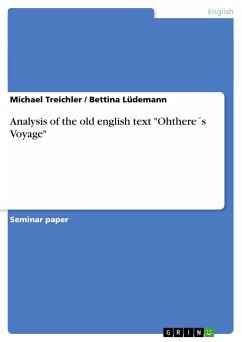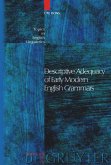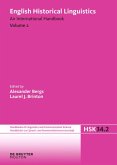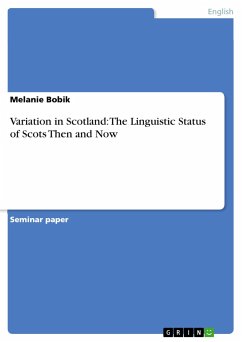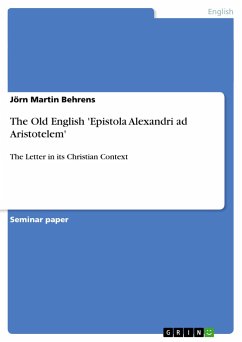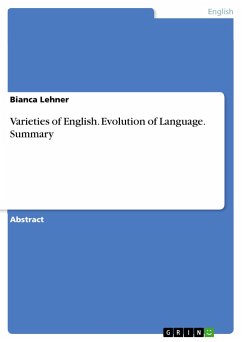Seminar paper from the year 2002 in the subject English Language and Literature Studies - Linguistics, grade: Good, Carl von Ossietzky University of Oldenburg (Anglistics), course: English through the ages, language: English, abstract: The description of Ohthere's voyages is an insertion into a translation of "A history of the world" by Paulus Orosius. Orosius was a fifth century Spanish cleric, who was engaged by the North African Bishop Augustinus of Hippo to write his Historia adversus paganos ("History against the pagans") in order to refute pagan claims that the coming of Christianity was responsible for recent disasters in Europe.Possibly, the Old English Orosius was one of the works of translation commissioned by King Ælfred of Wessex (reign: 871 - 899) as a part of his educational program proclaimed in the preface to Gregory the Great 's Pastoral Care ( cf. Raith 1958: 1) . Since Orosius' version only covered the geography south of the Alps, it was lacking the Northern part of Western Europe. Therefore, the narratives of the voyages of Ohthere and Wulfstan, two seafarers, who sailed the Northern and Baltic Sea, were added to complete and extend Orosius` description. The text of Orosius is divided into six books, which are each further subdivided into sections. The present work will concentrate on the first section of the first book where Ohthere reports to King Alfred about his first journey from his homeland, Halgoland, which today is the province of Hålogaland in Northern Norway, around the Northern Cape to the White Sea (Ekblom 1941/42: 115). Since most readers will be unfamiliar with the Old English language, a normal translation of the text would not be sufficient to identify its grammatical structure. Therefore, the first part of the following analysis contains an interlinear morphemic translation of the Old English text.The second part of the analysis starts with an examination of several functions of OE cases found in the text and the differences to their realization in MnE. After a view on OE negations, two common OE syntactical structures will be discussed by examining certain examples occurring in the text.

